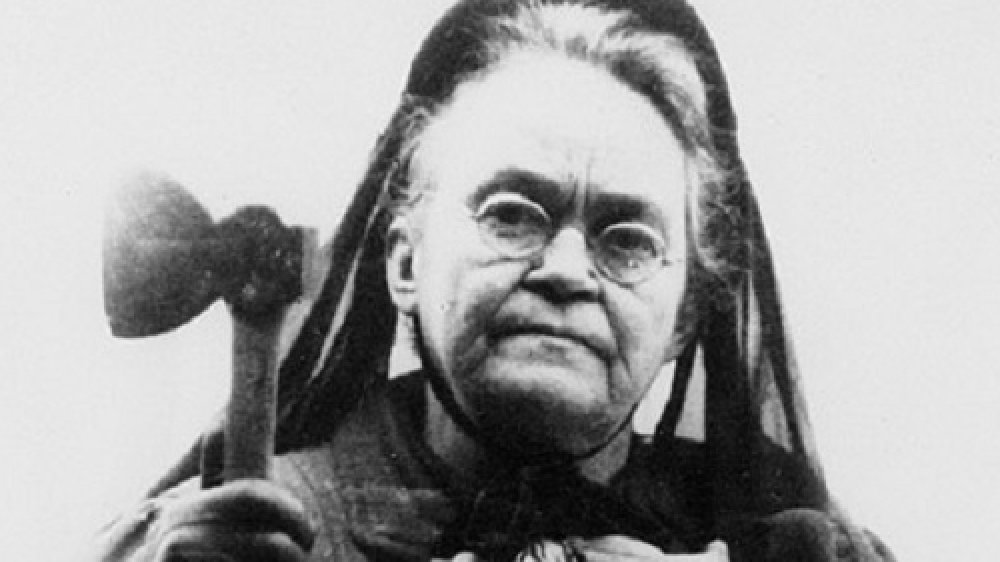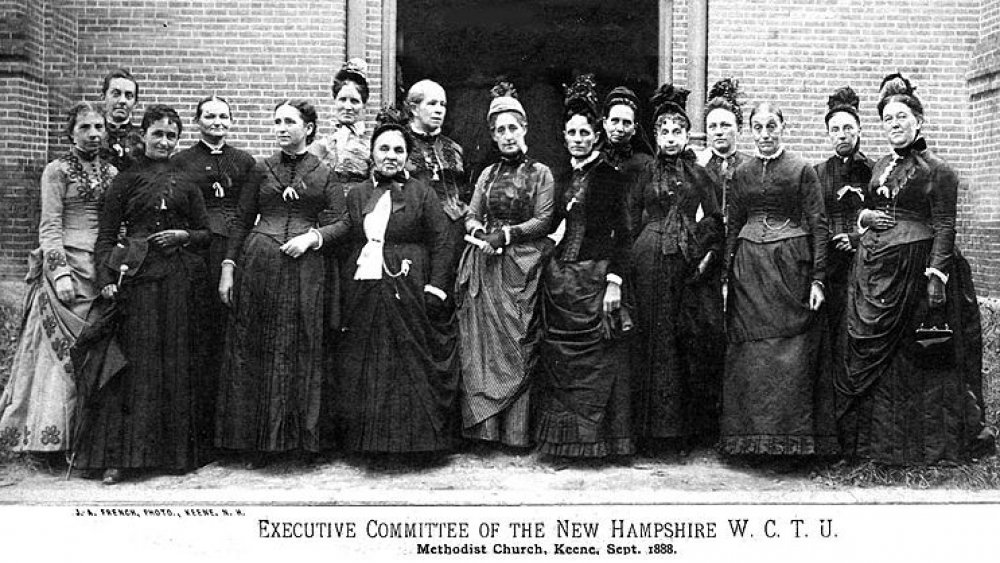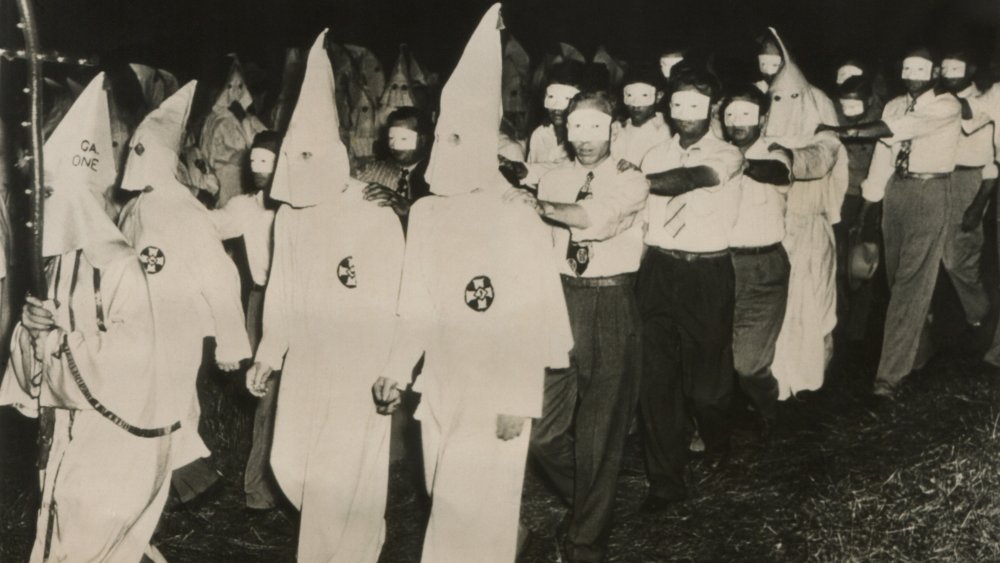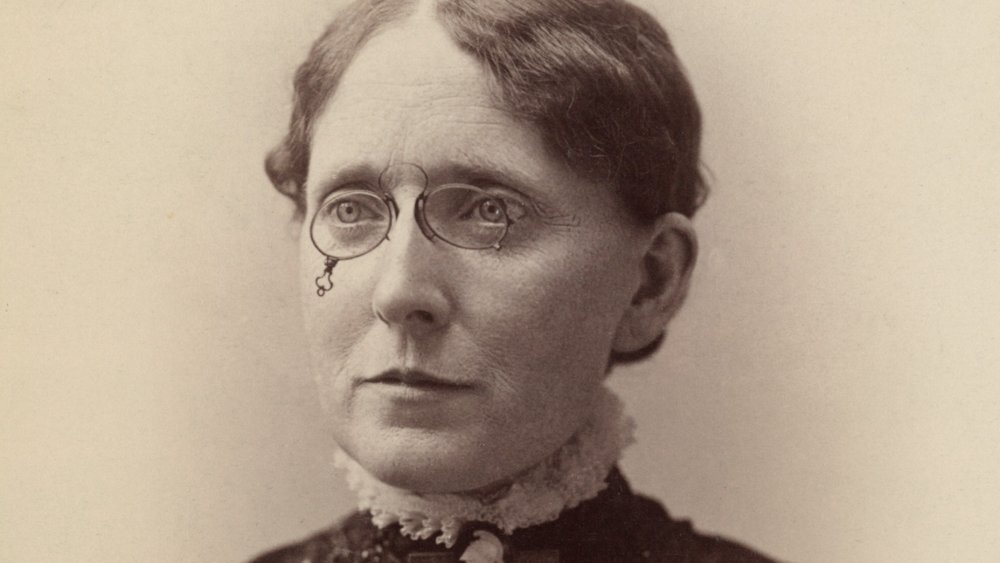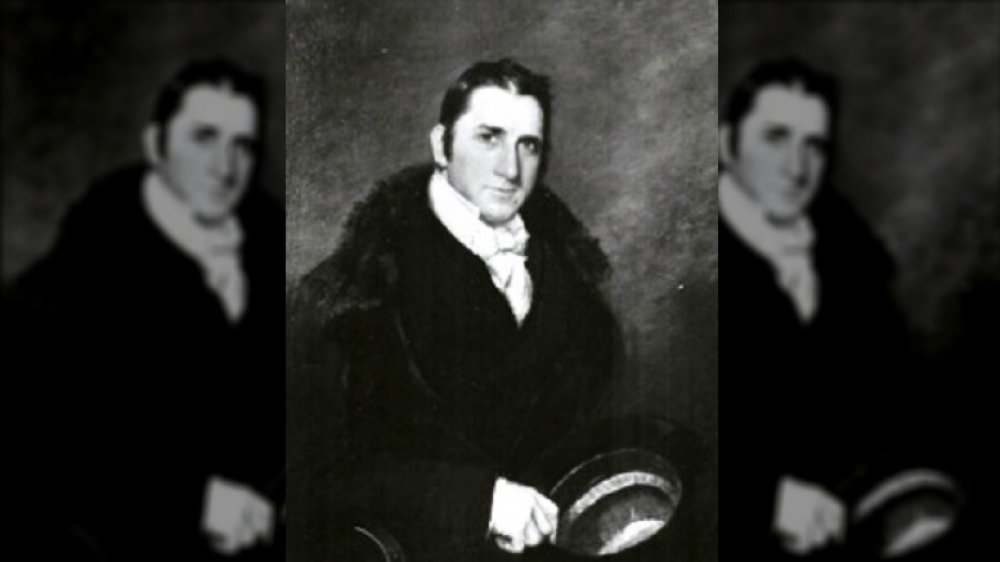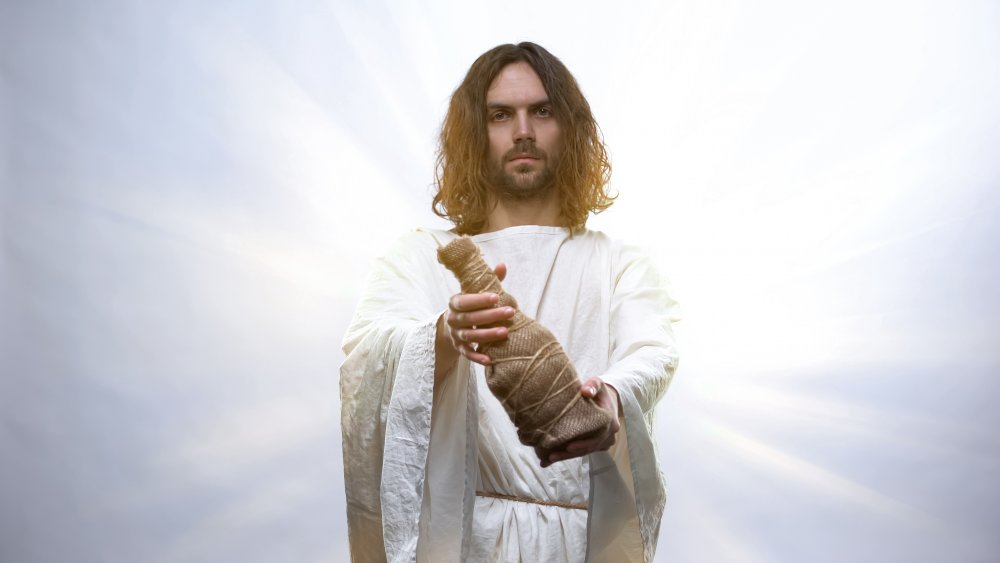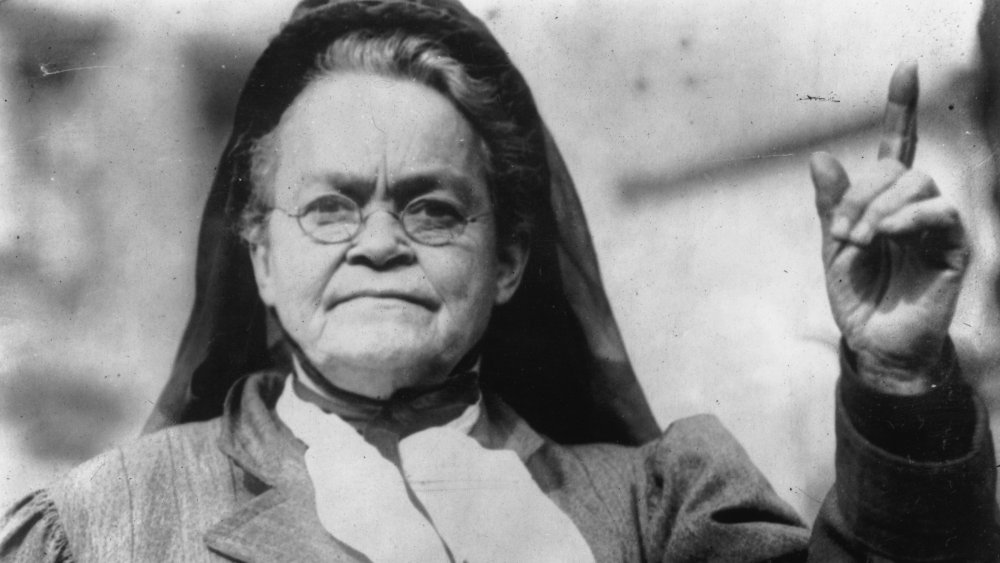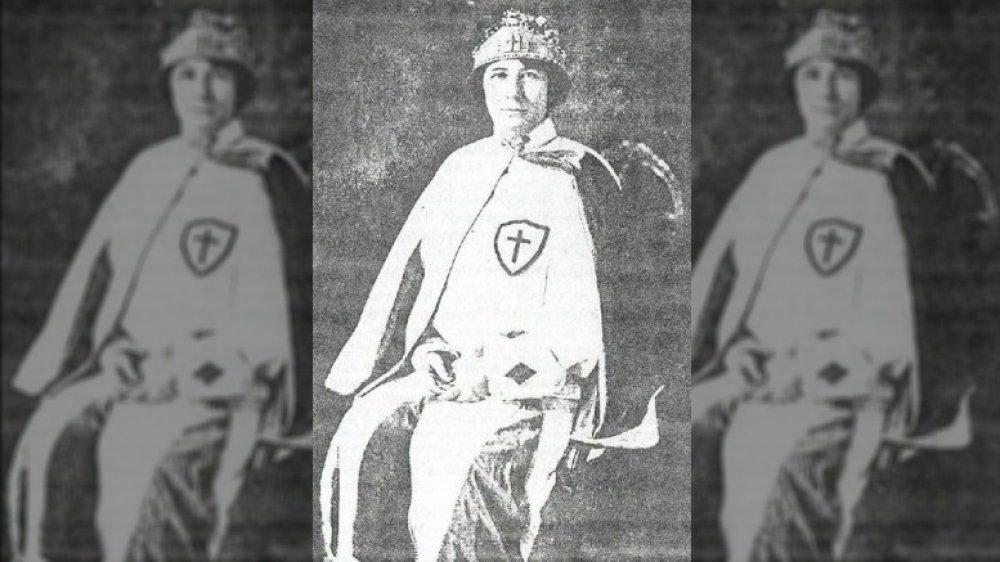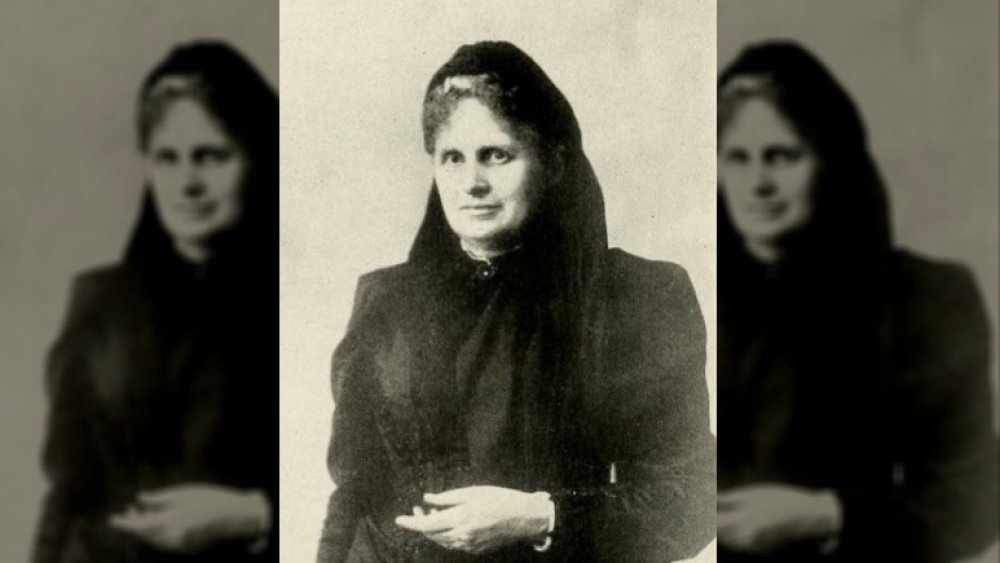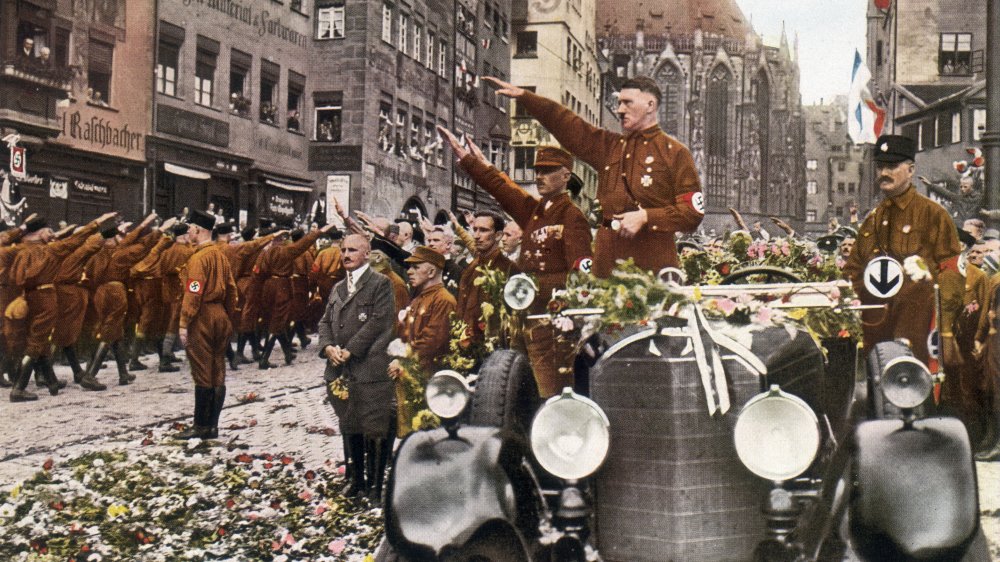The Messed Up Truth Of The Temperance Movement
The temperance movement has been around for a long time, and it's a surprisingly strange bit of history. According to The Telegraph, the first person to promote the idea was Joseph Livesey, a newspaper man and politician in Preston, England. He kicked off the movement in the 1830s, and by 1835, supporters had organized into the British Association for the Promotion of Temperance.
The reason behind it was only partially to do with alcohol. Supporters tended to be members of the working class who were, at the same time, fighting for the right to vote. They thought their position as teetotalers would give them an air of credibility and responsibility.
There's a ton of varying liquor laws in place around the world, but early temperance movement supporters preached that it should be a moral decision rather than one made because people feared the long arm of the law. America famously had a different take on the whole thing, and here's where things get weird. Like... really weird.
Fun alcohol facts from the temperance movement
One of the largest organizations dedicated to temperance in the US is the Woman's Christian Temperance Union. They were formed in the 1870s, and were one of the first lobbyist groups in Washington, DC. According to SUNY Potsdam, there were more than 1,000 local chapters of the union within five years of their establishment, and they all needed to spread the word about what a tipple or two could do.
First, they taught that alcohol was a byproduct of fermentation, but added that fermentation happened only as a part of decay after death. They likened alcohol to the same thing a vulture feeds on, namely, "carrion all quivering with putrescence." It was "the excretion of a fungus," and they hopped on the excrement bandwagon hardcore. Wine was essentially grape juice that had been pooped out by fungus, so... there's that.
Then, there were side effects. Drinking could cause spontaneous human combustion, they preached, cause livers to grow and weigh up to 25 pounds, it would cause blood vessels to thin and burst, and a person's heart to turn to fat. Then there was the possibility of suffering "alcoholic consumption," which was essentially a pain in the side, a vomit stream of blood, and death. Alcohol would turn blood into water, burn away the lining of the throat, and make a person crazy. Effects, they said, would also be passed down to children, grandchildren, and great-grandchildren. Yikes.
The temperance movement had a militant wing, and they were the Ku Klux Klan
It's easy to picture the temperance movement as being run by women in proper clothes preaching about how alcohol turned their husbands into wastrels, but the temperance movement had a dark side — the kind that wore hoods and robes.
In 1915, William Simmons founded what The New York Times calls the second Ku Klux Klan. It rolled along for a few years, but once one-time Anti-Saloon League promoters and fundraisers Edward Young Clarke and Elizabeth Tyler got on board, there was no looking back. Their messages went hand-in-hand — while the KKK rallied against groups like immigrants and Catholics, the temperance movement was blaming those same groups for spreading the evils of alcohol.
Bootleggers and speakeasies became targets of both groups, and while the temperance movement preached, the KKK got out their tar and feathers. According to SUNY Potsdam, they didn't mess around. They believed anyone caught drinking should be subject to being tortured, whipped, branded, sterilized, and tattooed, along with being kicked out of church, forced to drink castor oil, and put on public display in bottle-shaped cages. Others were even more extreme, believing that anyone caught drinking should be exiled to concentration camps, hung from an airplane (by the tongue) and flown cross-country, or just outright executed, along with up to four generations' worth of their descendants.
The temperance movement was a politically correct way of being anti-immigrant
According to the Smithsonian, the temperance movement was about much more than alcohol — they were about condemning the huge numbers of immigrants that entered the US in the decades leading up to the ill-fated 18th amendment. Jon Grinspan, curator of political history at the Smithsonian's National Museum of American History, put it this way: "Organizing around alcohol is in some ways a politically correct way to go after immigrants. It's not entirely polite to say, 'I want to get all the Catholics out of America.' But, it's very polite to say, 'Alcohol is ruining society.'"
According to Ken Burns's Roots of Prohibition (via PBS) the earliest meeting places of temperance movement supporters were Protestant churches. Many were women, who gathered together to condemn the alcohol and addiction that had ruined lives and broken families. At the time, some of the largest producers of beer were newcomers to the country — German immigrants.
Here's where a little perspective is needed: there's a ton of Starbucks around today, right? In 1897, there were even more saloons — 23 for each and every Starbucks location today, says The New York Times. They were places to eat, meet, and debate along with drink, but it was the drinking — and the bad influence immigrants were having on "native" American citizens — that was the concern of the temperance movement.
Why anti-lynching campaigners had a beef with the temperance movement
There was a lot going on as the 19th century drew to a close, and almost shockingly, one of those things was Ida B. Wells' campaign to end lynchings across the American South. Yes, that was still a thing, and Wells was doing more than just talking about how bad it was, she was investigating lynchings and reporting on them in the global press (via The Guardian). And she had a major beef with the temperance movement.
According to the American Association for State and Local History, Wells took her issues with Frances Willard (pictured), temperance activist and president of the WCTU, to the worldwide press. She was on a speaking tour in 1894 when she called Willard out as lacking in morals, and here's why: The temperance movement counted black women as a large demographic among their supporters, but still, Willard and the WCTU were huge fans of using racial stereotypes to appeal to white women — particularly in the South — and tell them just how much danger they were in because of violence rooted in "black drunkenness." Willard once preached (via NPR), "'Better whiskey and more of it' is the rallying cry of great, dark-faced mobs. The safety of [white] women, of childhood, of the home, is menaced..."
After Wells called her out on the world stage, Willard later went on to guide the WCTU in passing anti-lynching resolutions.
Dr. Thomas Sewall: temperance advocate, grave-robber
There's a decent amount of bizarre medical "facts" associated with the temperance movement, and some of those came from Dr. Thomas Sewall. Sewall firmly believed that almost any illness could be blamed on alcohol, whether it was premature aging, depression, or gout. SUNY Potsdam says one of his most wide-reaching contributions to the movement were eight drawings, each one showing "alcohol diseased stomachs." Hundreds of thousands of copies of his drawings were circulated through organizations from schools to prisons, and that's not his whole story.
In 1819, townsfolk in Essex, Massachusetts noticed a terrifying phenomenon — flickering lights were seen dancing through the cemetery. It wasn't long before the townsfolk realized that bodies were missing. Included in the list of missing bodies were two 10-year-old boys and a man who had been six years in the ground. Historic Ipswich says Sewall was soon discovered to be doing his anatomical research on an "unsanctioned corpse," and it wasn't long before he went from respected medical professional to being exiled from town.
He headed to Washington, D.C., where Boundary Stones says he was soon writing on the "fact" that cholera was proof of the evils of alcohol. He was part of the D.C. Chapter of the American Temperance Society when he wrote in favor of abstinence, and ultimately helped push along a movement to enact a city-wide prohibition on the sale and consumption of alcohol long before the nationwide Prohibition became global news.
The two-wine theory of the temperance movement
So, if many temperance movement meetings were based around the church, isn't there a problem? Alcohol — particularly wine — is mentioned a lot in the Bible, so how did temperance advocates reconcile themselves with the idea that Christ drank wine?
Clearly, they couldn't be saying that Christ was partaking happily of the "Demon Rum," so SUNY Potsdam says they came up with an alternate explanation. Religious temperance advocates believed in the "two-wine" theory, which basically said the Bible was referring to two different drinks when it mentioned wine. If it was consumed by someone good or used to praise God, it was actually just grape juice. If it was used in a tale to illustrate the evils of drunkenness, that's when it was wine.
That idea is, of course, a load of baloney. The original Hebrew version of the text uses the same word whether the story is about Noah getting drunk or Christ taking a drink. Still, the Christian History Institute says there's been a fascinating consequence of the belief. In the 1860s, a temperance-leaning dentist was troubled by the idea of serving alcoholic wine during Communion, so he took it upon himself to develop an alternative. Grape juice wasn't always available, so he and his son came up with a way to preserve grape juice while halting fermentation. Their names? T.B. and Charles Welch, and Charles formed Welch's Grape Juice Company in 1897.
Carrie Nation had an axe, gave those bottles many, many whacks
Many temperance movement advocates were very, very outspoken about their beliefs, and sometimes, they were downright violent. Just take Carrie Nation, and her ax.
Nation was born in Kentucky, and when her first marriage — to a Union Army doctor, just after the Civil War — failed, she blamed alcohol. Eventually she remarried, and as the years went by she began having visions that guided her down the path of the devoutly religious. According to the Smithsonian, her beliefs and her failed marriage ultimately led to her organizing a Kansas chapter of the WCTU, and she... she was direct. On December 27, 1900, she headed into the Carey Hotel bar in Wichita armed with a hatchet and started smashing.
She was, of course, arrested, but there's a saying that no publicity is bad publicity. Nation (who preferred to spell her name "Carry"), continued going on speaking tours and heading into bars — which were usually off-limits for decent, self-respecting women — and causing a ruckus by doing everything from singing, reading from the Bible, and breaking anything within reach. According to History, she sold hatchet pins to like-minded individuals because hey, she had fines to pay. Her second husband divorced her a year into her crusade, and she died in 1911 after collapsing at one of her rallies.
The Ku Klux Quaker vs. Muncie's Crusading Policewoman
The town of Muncie, Indiana seems like an unlikely place to be the seat of white supremacy, but it was — and at the heart of it all was a woman named Daisy Douglas Barr (pictured), who would move up through the ranks of hate to become the head of the Women of the Ku Klux Klan (WKKK). According to Timeline, Barr recruited tens of thousands of women to the cause — a cause that included temperance.
But something awesome happened in Muncie: Barr convinced Muncie mayor to appoint their first female policewoman. At the time, Hoosier State Chronicles says Muncie was a major stronghold of the WKKK, and while Barr undoubtedly expected someone sympathetic to her cause, she got Alfaretta Hart. Hart wasn't just Catholic but, to add insult to injury, she was a "wet."
And she not only took her job seriously, but she was not about to stand for nonsense. Early on, she threatened "to tear the town wide open," because "there will be more hypocrites in hell than prostitutes or saloon keepers." Hart immediately took aim at the WKKK and the Prohibitionists, calling for an overhaul of the justice system and aid for homeless women and girls. She denounced members of the temperance movement as hypocrites and sadly, she wasn't a thorn in Barr's side for long. She resigned after about a year, and Barr? Her downfall came amid accusations she had lifted around $100,000 from the WKKK.
The temperance movement changed school curriculums
It takes a lot to change school curriculums, just ask anyone who's on either side of the debate about Creationism vs. Evolution. But starting in the 1870s, the temperance movement successfully got their agenda into school. That came in large part thanks to Mary Hunt (pictured). In 1879, Frances Willard asked her to speak at a national convention for the WCTU. Hunt had already made waves — a former teacher, she'd had some serious success in getting the school board of Massachusetts to include temperance teachings. The WCTU loved her vision, and established a committee for changing school curriculums across the country.
Petitions and pestering didn't work, so Hunt and the WCTU went back to basics and started campaigning not for change, but for the election of officials who were supportive of the movement. Vermont was first, and by 1882 they had gotten their figureheads elected and passed bills introducing the Scientific Temperance Instruction Movement. By 1900, every state had passed similar laws making temperance a part of school curriculum.
What did that mean for schools? According to SUNY Potsdam, laws mandated that schools had to use textbooks that described the evils of alcohol in no uncertain terms, teaching ideas that included the "fact" that children of parents who drank were doomed to a life of insanity and living in the poorhouse. And guess who wrote many of those texts?
The audacious set-up of the Scientific Temperance Federation
In order to guarantee school boards were complying with federal laws mandating the teaching of temperance, Hunt and the WCTU set up the Department of Scientific Temperance Instruction in Schools and Colleges. For texts to be approved for use in schools, they needed to get the stamp of approval from Hunt and the WCTU, says SUNY Potsdam, and here's where things get extra shady.
Many textbook authors refused to change their texts to support claims like the "fact" alcohol weakened a person's heart to the point where someone could push a finger through it. As a result, most texts were written anonymously or by authors who had been essentially bribed with an insane amount of money. Others were written or revised by Hunt herself to bring them in line with guidelines and don't worry, it gets shadier.
Hunt was accused of profiting from the authorship of the textbooks she presented for WCTU approval. The books would get the stamp of approval, a lot would be sold and the author — who was often Hunt — would get some nice cash. Hunt denied she was doing anything wrong, and decided to donate the profits to the Scientific Temperance Federation, a charity dedicated to supporting the WCTU. That would be great... if the charity was more than just herself, her pastor, and a couple friends, and they really could have picked a place besides her house to base it out of.
The temperance movement had a bizarre role model
As if getting cozy with the KKK wasn't proof enough of the temperance movement's questionable choice in allies, there was also a contingent who lauded Hitler for his devotion to keeping people sober. Really.
That was the sentiment offered up at the 16th triennial world meeting of the Woman's Christian Temperance Union (via SUNY Potsdam). The year was 1937, and the speaker was the president of the WCTU, Ella Boole. She condemned drinking as "one of the great 'causes of maternal death,'" and she also lauded Hitler for his decision to give control of beverage concessions at the Berlin Olympics to the Nazi branch of the WCTU. Oh — and, she said, he didn't support restaurants that served beer, so clearly, he was a stand-up guy that deserved a shout-out.
The United States Holocaust Memorial Museum took another look at Hitler's stance on alcohol, and it would be interesting to know what Boole would have to say if she knew the whole story. Alcoholism was covered by the Law for the Prevention of Progeny with Hereditary Diseases, and those who were found to be suffering from it were subject to sterilization. Other reasons for sterilization included genetic blindness and deafness, physical deformity, epilepsy, a diagnosis of manic-depressive disorder or schizophrenia, or "feeblemindedness." Around 400,000 people were forcibly sterilized under the law.
The temperance movement and eugenics collide ... confusingly
Eugenics is the idea that the human race can be improved by things like sterilization and selective breeding, and if that sounds very Third Reich, it absolutely is. The movement was alive and well in the US long before Hitler rose to power in Germany though, and according to the Eugenics Archive, the temperance movement played both sides of the argument.
For some, temperance and eugenics went hand-in-hand, as it was taught alcohol corrupted the gene pool and some believed it would ultimately lead to the degradation of the human race. That's exactly the opposite of what eugenics promoted, so many fell on the temperance side of the coin.
But there was another viewpoint, too. Some argued that alcohol (and drugs) should be used as a sort of selective measure. They believed that if someone could drink — and drink a lot — that they must have strong genes and a powerful constitution. Right? Makes sense? Anyone who died as a consequence of alcohol use wasn't thought to be much use anyway, and didn't have genes eugenicists wanted to pass along anyway. Alcohol was good because it killed off the weak, and if that's not depressing enough for you, there's a movie about a little girl in a red dress and a concentration camp you can watch.
